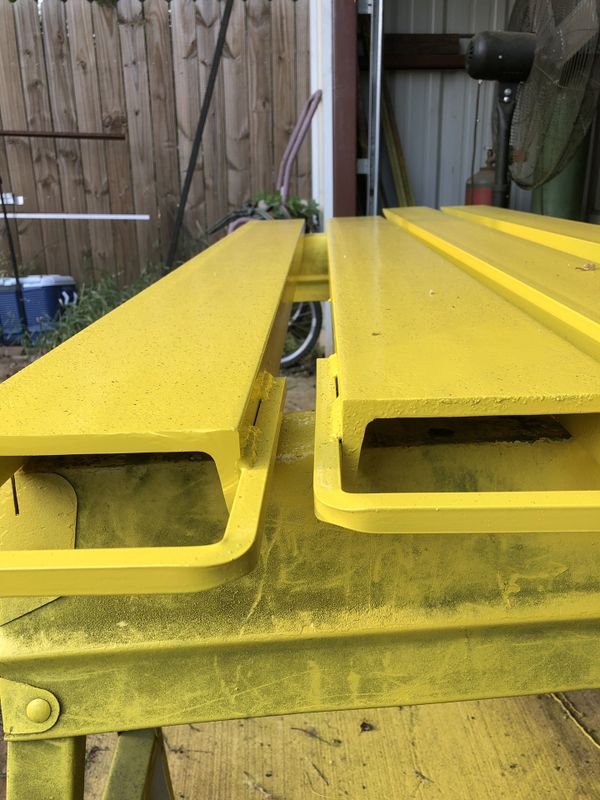Lift Your Load: The Ultimate Guide to Forklift Extensions
Lift Your Load: The Ultimate Guide to Forklift Extensions
Blog Article

In the world of material handling, efficiency and safety are paramount. For those who operate forklifts, the right tools can make a significant difference in performance and productivity. One such tool that often goes overlooked is forklift extensions. These essential attachments not only enhance the capabilities of your forklift but also streamline operations when lifting larger or awkwardly shaped loads.
Forklift extensions are designed to increase the length of the existing forks, allowing operators to handle bigger pallets or cargo that standard forks might struggle with. By effectively extending the reach of your lifting equipment, these extensions bring numerous benefits to warehouses, construction sites, and other industrial environments. In this guide, we will explore the various types of forklift extensions, their applications, and the key factors to consider when selecting the right one for your needs.
Types of Forklift Extensions
Forklift extensions come in various forms to accommodate different lifting needs and applications. The most common type is the standard fork extension, which can be easily attached to existing forks. These extensions are typically made from sturdy materials such as steel and are designed to extend the reach and capacity of the forklift. They are ideal for handling longer loads like lumber or piping, allowing for safer and more efficient transportation.
Another popular type is the sliding fork extension. This design allows for adjustable lengths, providing flexibility depending on the load being carried. With sliding fork extensions, operators can quickly modify the length as needed, making them suitable for a range of tasks in warehousing or construction environments. The adaptability of these extensions enhances productivity while ensuring that cargo remains stable during transport.
Finally, there are specialized fork extensions designed for specific applications. For instance, there are extensions made for handling bulky or irregularly shaped loads, which often feature unique shapes or added support features. These extensions are essential when dealing with oversized items that require extra stability and security. Using the right type of forklift extension can significantly improve operational efficiency and safety in various settings.
Benefits of Using Forklift Extensions
Using forklift extensions can significantly enhance the versatility of your material handling operations. These extensions allow forklifts to handle longer loads that standard forks may struggle with. By providing additional reach and support, extensions help prevent damage to goods during transport, ensuring that products are moved safely and efficiently.
Forklift Attatchments
Another advantage of forklift extensions is their ability to improve stability when lifting longer items. Extensions distribute the weight of the load more evenly, reducing the risk of tipping or accidental drops. This added safety benefit not only protects your workforce but also minimizes the potential for costly downtime due to accidents or equipment damage.
Finally, forklift extensions can lead to increased productivity within your warehouse or job site. With the capability to lift larger and longer materials, you can reduce the number of trips needed to transport items. This efficiency not only speeds up operations but also allows for more effective use of equipment, as your forklift can tackle a broader range of tasks with the same tools.
Safety Considerations
When using forklift extensions, it is crucial to prioritize safety to prevent accidents and ensure operational efficiency. Operators must be trained in the proper handling of extensions and should always adhere to the manufacturer's guidelines. This includes understanding the load capacity and ensuring that the extensions are compatible with the forklift. Always inspect extensions before use for any signs of wear, damage, or improper installation, as these factors can significantly affect the stability and safety of the lift.
Another important aspect of safety is load balance. Forklift extensions can alter the center of gravity of the load, increasing the risk of tipping. Operators should be aware of the weight distribution and ensure that loads are evenly distributed on the forks. Whenever possible, it is advisable to keep the load as low as possible while lifting to enhance visibility and control. Additionally, avoid extending the forks beyond their maximum reach, as this can compromise the forklift's stability and lead to potential hazards.
Finally, maintaining clear communication among team members is essential when operating forklifts with extensions. Establishing hand signals or using radios can help coordinate movements and alert others in the vicinity. Operators should also watch for pedestrians and obstacles in the work environment, taking extra precautions during loading and unloading activities. By focusing on safety practices, companies can significantly reduce the risk of accidents and injuries associated with using forklift extensions.
Proper Maintenance and Care
To ensure the longevity and optimal performance of your fork lift extensions, regular maintenance is critical. Start by inspecting the extensions for any signs of wear, such as cracks, bends, or excessive rust. It is essential to check the welds and joints, as these areas can weaken over time. Any damage should be addressed immediately to prevent further issues when the extensions are in use.
Cleaning your fork lift extensions is equally important. Dirt, debris, and grease can accumulate and hinder their functionality. After each use, take the time to wipe down the extensions with a clean cloth and a suitable cleaning solution. Additionally, paying attention to the connection points where the extensions attach to the fork lift can prevent malfunction and preserve both the extensions and the lift itself.
Finally, always ensure that the extensions are stored properly when not in use. Avoid leaving them exposed to harsh weather conditions, which can lead to corrosion and deterioration. A dedicated storage area that protects your extensions from the elements will go a long way in maintaining their condition. Following these maintenance and care tips will help you get the most out of your fork lift extensions, ensuring they serve your needs efficiently and safely.
Report this page